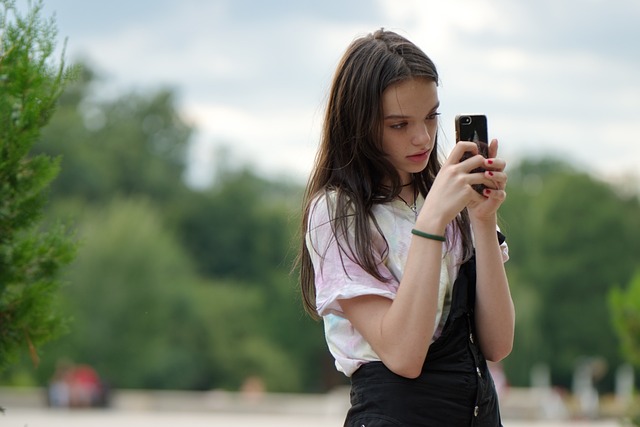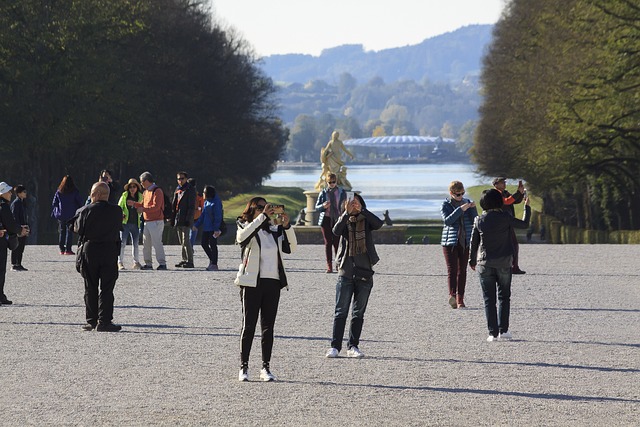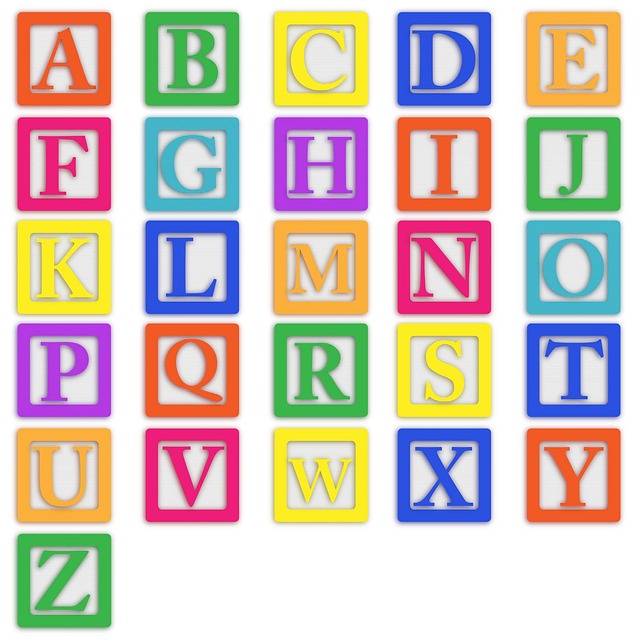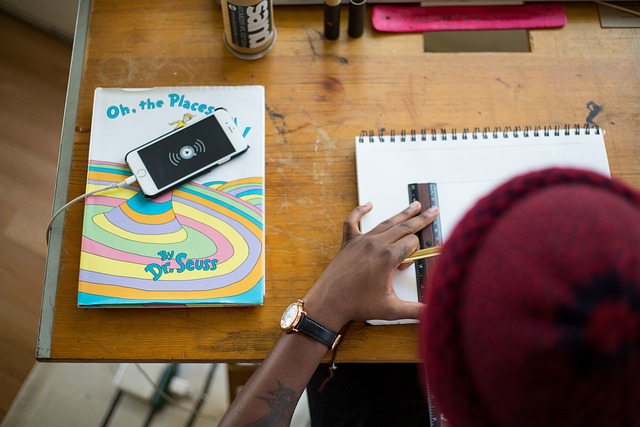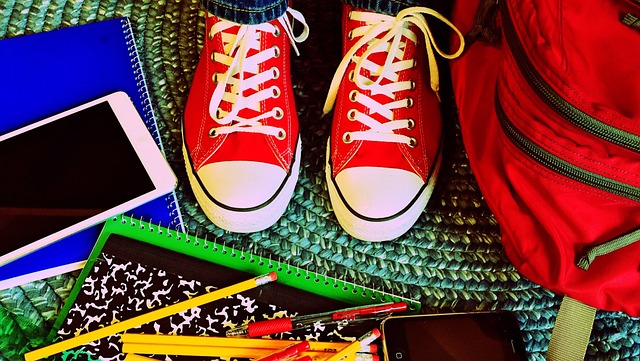smartphone photography Lessons in education
Scott Umstattd
Embark on an educational odyssey as we unveil the latent potential of smartphone photography lessons across classroom curriculums. Within this exploration, we uncover the transformative power of ubiquitous smartphones, transcending them from mere tools of expression to dynamic catalysts for critical thinking, observation skills, and personal development.
Education today is confronted with the challenge of engaging students in an ever-evolving digital landscape. Traditional pedagogical approaches, while valuable, often fall short in capturing the attention and curiosity of the modern learner.
The digital age has bestowed upon us a generation immersed in visual communication. Smartphones have turned every individual into a potential photographer. Yet, the educational potential of harnessing this innate visual literacy remains largely untapped
The purpose of this article is two-fold: to unravel the transformative potential of smartphone photography lessons in education and to provide educators with a practical guide for its implementation. The points being made aim to elevate not only the cognitive and academic benefits but also the emotional and creative dimensions that photography lessons can bring to the learning experience.
As educators navigate the complexities of the modern classroom, understanding the significance of smartphone photography as more than a mere expressive medium becomes paramount.
By acknowledging smartphones not merely as distractions but as potent tools for learning, educators can leverage the technology to craft dynamic, engaging, and effective learning environments.
The Current Landscape
The evolution of Visual literacy
In the current educational landscape, the paradigm of literacy has expanded beyond traditional reading and writing. Visual literacy, the ability to interpret and create visual messages, is gaining prominence.
The proliferation of digital media and the omnipresence of visuals in our daily lives necessitate a shift in educational approaches. Smartphone photography emerges as a natural ally in cultivating visual literacy, offering students a medium through which to engage meaningfully with the visual world around them.
The presence of technology
The presence of smartphones among students positions these devices as powerful educational tools. Unlike specialized cameras, smartphones are readily available, eliminating barriers to entry.
This accessibility democratizes the learning process, enabling students from diverse socio-economic backgrounds to engage in the educational benefits of photography lessons. In the current landscape, where technology is not a luxury but a necessity, integrating smartphones for educational purposes aligns with the realities of students' lives.
Visual Storytelling and Communication
Visual storytelling has become a prevalent mode of communication, particularly among younger generations. Platforms like Instagram, Snapchat, and TikTok thrive on the sharing of visual narratives.
Recognizing and harnessing this trend in education can enhance students' communicative skills. Smartphone photography, with its immediacy and simplicity, aligns with the language of contemporary communication, providing students with a tool to express themselves authentically.
Integrating Smartphone photography lessons into the Curriculum
Contemporary educational frameworks acknowledge the need for interdisciplinary learning. Smartphone photography lessons seamlessly integrate into various subjects, from English and history to science and mathematics.
Its adaptability allows educators to infuse creativity into lessons, making learning more engaging and relevant. The current landscape calls for educational approaches that resonate with the digital generation, and smartphone photography stands at the intersection of technology and pedagogy.
Empowering Student Expression
In an era where student voice and agency are increasingly valued, incorporating mediums that empower students to express themselves is crucial. Smartphone photography, with its immediacy and personal touch, fosters a sense of ownership over one's narrative.
By allowing students to visually articulate their thoughts and perspectives, educators can tap into a rich source of untapped creativity, enriching the overall learning experience.
In exploring the current landscape, it becomes evident that smartphone photography is not just a trend but a potent tool aligning with the evolving nature of education.
Adding valuable photography lessons into the curriculum holds the promise of fostering visual literacy, enhancing communication skills, and empowering students as active participants in their educational journey.
Elementary School
Integrating Smartphone Photography LESSONS into Elementary Education
Foundational Concepts: Introducing photography in the classroom begins with foundational concepts. Elementary school students are exposed to the basic elements of photography, including composition, framing, and storytelling. The emphasis is on creating a positive and explorative environment, allowing students to develop an initial understanding of the visual language.
Hands-On Learning: Learning by doing is crucial at this stage. Students engage in hands-on activities, exploring their surroundings with a smartphone camera in hand. This interactive approach helps demystify the technical aspects of photography and cultivates a sense of curiosity about the visual world.
Elementary School Classroom Examples
Visual Storytelling with Shapes: One engaging classroom example involves visual storytelling with shapes. Students are tasked with capturing pictures of various shapes in their environment and using these images to construct a visual story. This not only reinforces shape recognition but also introduces the concept of sequencing in storytelling.
My Day in Pictures: The "My Day in Pictures" assignment encourages students to document their daily activities through photography. This not only enhances observational skills but also serves as a foundation for future projects that involve documenting experiences and creating visual narratives.
Math in Focus: To integrate photography into mathematics, the "Math in Focus" project prompts students to find and photograph mathematical concepts in their surroundings. This hands-on approach helps bridge the gap between abstract mathematical ideas and real-world applications.
These classroom examples offer a snapshot of how smartphone photography lessons can be seamlessly incorporated into elementary education. By concentrating on foundational concepts and providing hands-on learning experiences, educators lay the groundwork for a lifelong appreciation of photography.
Middle School
Building Advanced Techniques
Exploration of Composition: In middle school, students move beyond the basics and delve into advanced composition techniques. Concepts like leading lines, symmetry, and framing are explored in depth. Students learn how these techniques can be employed to create visually compelling and dynamic photographs.
Understanding Lighting: Building on their foundational knowledge, students explore the nuances of lighting. They understand how different lighting conditions can affect the mood and visual impact of a photograph. This exploration lays the groundwork for more sophisticated and intentional use of light in their photography.
middle school classroom examples
Documenting Scientific Discoveries: Middle school science classes can leverage smartphone photography to document scientific experiments and discoveries. Students capture each step of an experiment, visually recording their observations and results. This not only enhances their understanding of scientific processes but also reinforces the importance of accurate documentation.
Historical Narratives through Photography: History becomes a hands-on experience as students use smartphone photography to recreate historical scenes. This interactive approach to learning fosters a deeper connection with historical narratives. Students research, plan, and execute visual representations, blending creativity with historical understanding.
Language Arts and Visual Poetry: The integration of smartphone photography into language arts takes a poetic turn. Students create visual poems by combining evocative images with carefully chosen words. This interdisciplinary approach enhances both their visual and verbal communication skills.
Photography lessons in middle school focus on refining techniques and exploring the potential of smartphone photography as a versatile tool for self-expression and academic exploration. The integration of advanced composition and lighting techniques enriches students' visual language.
High school
advanced critical thinking
Analyzing Composition Choices: High school students are encouraged to engage in advanced critical thinking about their composition choices. They delve into the reasons behind their framing, use of leading lines, and overall composition. This introspection enhances their ability to make intentional and informed choices in their photography.
Social Commentary through Photography: Photography becomes a powerful tool for social commentary. High school students explore social issues and document them through a thoughtful and critical lens. This not only sharpens their photography skills but also nurtures a sense of social responsibility and awareness.
high school classroom examples
Visual Representation in Mathematics: In mathematics, high school students use smartphone photography to visually represent complex mathematical concepts. Abstract ideas such as calculus or geometry are made tangible through carefully composed images. This interdisciplinary approach bridges the gap between the abstract and the visual.
Photography as a Medium for Literary Analysis: In literature classes, students use photography as a medium for literary analysis. They capture images that represent themes, characters, or moods from literary works, providing a visual dimension to their understanding of literature. This interdisciplinary integration enhances their analytical and interpretive skills.
Building Thematic Portfolios: As students approach graduation, the focus shifts to building thematic portfolios. High school students curate bodies of work that reflect their unique perspectives and interests. This process involves critical decision-making about the themes, styles, and messages they want to convey through their photography.
In high school, the incorporation of smartphone photography lessons reach an advanced stage, prompting students to think critically, analyze their choices, and employ photography as a powerful means of expression across various disciplines, marking the pinnacle of photography.
Using Smartphone photography Lessons in practice
Embedding Photography within Teaching: The seamless integration of smartphone photography into educational practice requires a paradigm shift in pedagogy. Educators must embrace photography lessons not merely as an add-on but as an integral part of the teaching and learning process. Workshops and training programs can be designed to empower teachers with the skills and confidence to incorporate photography into their daily practices.
Collaborative Learning and Cross-Disciplinary Teams: The implications for practice extend beyond individual classrooms. Collaborative learning environments and cross-disciplinary teams can be established to share best practices and insights. This collective approach allows educators to learn from one another, refine strategies, and collectively contribute to the evolution of effective smartphone photography integration across diverse subjects.
The effective implementation of smartphone photography in education demands a shift in practice at both the individual and collective levels. By embedding photography in pedagogy and fostering collaborative learning environments, educators can maximize the benefits of this versatile tool for student engagement and learning, enhancing the impact of photography lessons.
5 Ways to Use Picture Power's Photography Lesson Plans
Unlock the potential of your classrooms with Picture Power's Photography Lesson Plans—an innovative resource trusted by homeschool teachers, public and private schools, post-secondary institutions, and even adult learning classes. Our lessons are not just about cameras; they are crafted for teachers seeking engaging ways to introduce the basics of photography—composition and lighting.
Why Picture Power's Photography Lesson Plans?
- Simple and Focused: Our lessons are designed to cut through complexity, offering a clear focus on the essentials—composition and lighting.
- Versatility: Whether you are in a traditional classroom or navigating the landscape of homeschooling, our lessons are adaptable. They suit any setting—public, private, or post-secondary.
- Tech Inclusive: Embrace the technology your students know and love. Our lessons cater to any camera, including smartphones, making photography accessible to all.
- Engaging Learning: Capture your students' attention with lessons that resonate. By integrating familiar tools and a touch of fun, we create an environment where learning feels like an exciting adventure.
- Trusted by Diverse Educators: Join a community of educators who have embraced our Photography Lesson Plans. From homeschooling parents to seasoned teachers and adult learning instructors, our lessons have proven effective across the educational spectrum.
Make all learning a captivating journey with Picture Power's Photography Lesson Plans. Empower your students with skills that go beyond the classroom. Purchase now and bring the magic of photography into your teaching repertoire.
